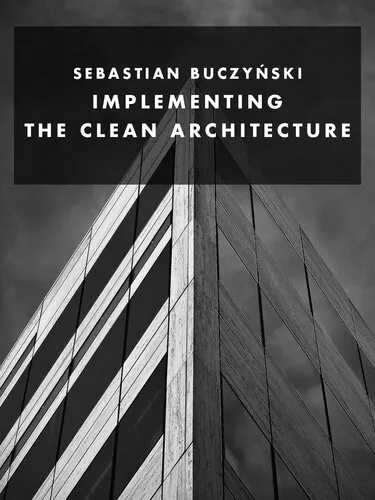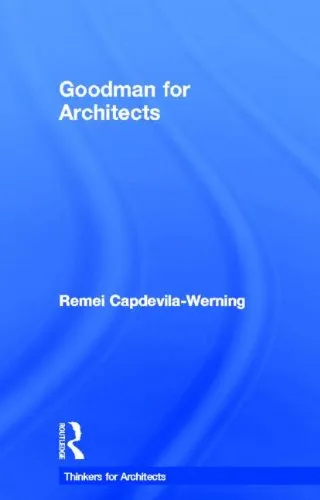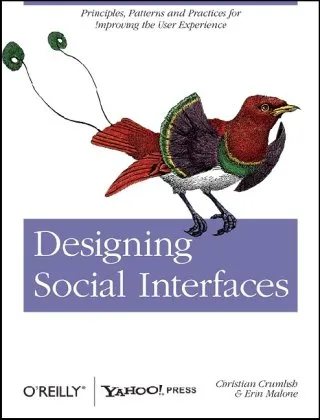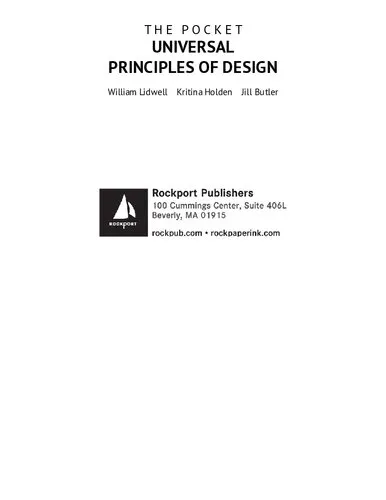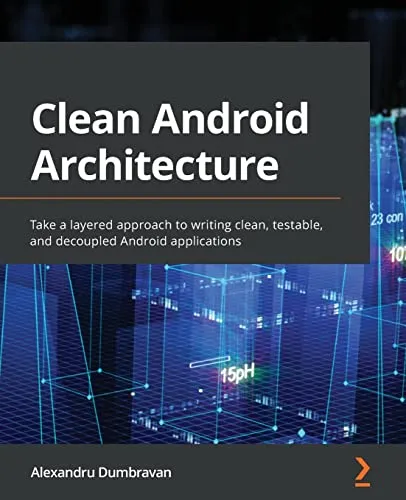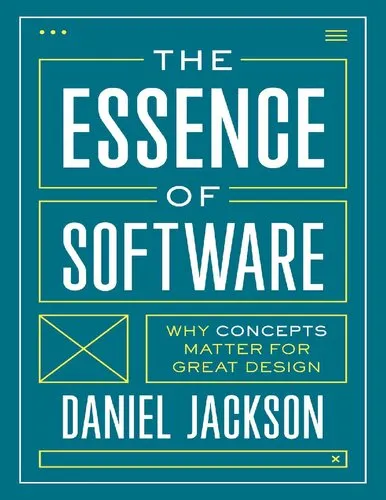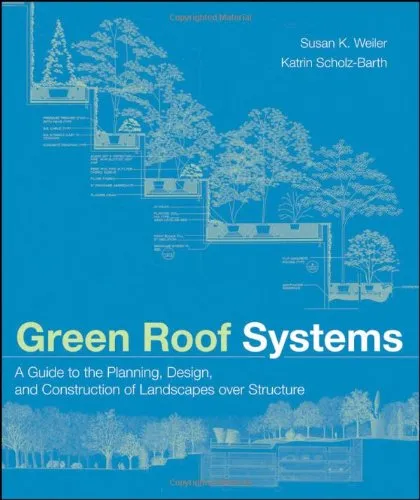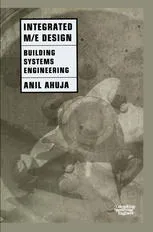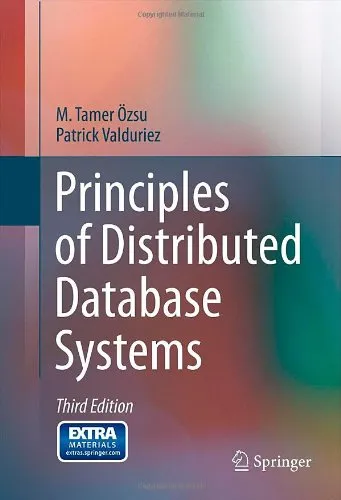Implementing the Clean Architecture
4.0
بر اساس نظر کاربران

شما میتونید سوالاتتون در باره کتاب رو از هوش مصنوعیش بعد از ورود بپرسید
هر دانلود یا پرسش از هوش مصنوعی 2 امتیاز لازم دارد، برای بدست آوردن امتیاز رایگان، به صفحه ی راهنمای امتیازات سر بزنید و یک سری کار ارزشمند انجام بدینکتاب های مرتبط:
معرفی کتاب "Implementing the Clean Architecture"
کتاب "Implementing the Clean Architecture" اثر Sebastian Buczyński یک راهنمای جامع و عملی برای توسعهدهندگان نرمافزار، معماران نرمافزار و علاقهمندان به مهندسی نرمافزار است که میخواهند ساختار کدهای خود را بهبود بخشند. این کتاب اصول و مفاهیم بنیادین Clean Architecture، و همچنین روشهای پیادهسازی آن را به تفصیل شرح میدهد. اگر به دنبال نوشتن کدی هستید که تمیز، مقیاسپذیر و قابل نگهداری باشد، این کتاب یک انتخاب عالی است.
خلاصهای از کتاب
در این کتاب، نویسنده تلاش میکند تا به یکی از مشکلات رایج در دنیای توسعه نرمافزار بپردازد: پیچیدگی و عدم نگهداریپذیری کد. "Implementing the Clean Architecture" با معرفی اصول SOLID و پیادهسازی Clean Architecture، به خوانندگان کمک میکند تا کدی بنویسند که مستقل از چارچوبها (frameworks)، قابل تست و کمترین وابستگی به جزئیات داشته باشد. نویسنده بهطور نظاممند مثالهایی واقعی و کاربردی ارائه میدهد و تلاش میکند مفاهیم پیچیده را به شیوهای ساده و قابلفهم مطرح کند. هر فصل کتاب با توضیح مفاهیم اصلی آغاز شده و سپس به نحوه پیادهسازی آنها در پروژههای واقعی پرداخته میشود.
نکات کلیدی کتاب
- آشنایی عمیق با اصول SOLID و نقش آنها در Clean Architecture
- استفاده موثر از Dependency Injection برای کاهش وابستگیها
- روشهای تست کردن نرمافزار با مثالهای کاربردی
- جزئیات لایههای مختلف در Clean Architecture و نقش هر لایه
- چگونگی مدیریت وابستگی به ابزارها و چارچوبهای خارجی
- استراتژیهایی برای نگهداری مقیاسپذیری و انعطافپذیری کد
جملات معروف از کتاب
- "The primary goal of Clean Architecture is to create a structure that endures the test of time."
- "Code that is easy to read and maintain performs better than code built for the sake of performance."
- "Frameworks should be treated as tools, not foundations. Avoid becoming a prisoner of your tools."
- "Good software design doesn’t emerge by accident; it’s the result of deliberate architectural decisions."
چرا این کتاب مهم است؟
در دنیای توسعه نرمافزار، داشتن کدی که بتواند همزمان با رشد کسبوکار و تکنولوژی پایداری خود را حفظ کند، یک چالش بزرگ محسوب میشود. این کتاب ابزاری ارزشمند برای تمام توسعهدهندگانی است که میخواهند ساختار نرمافزار خود را به سطحی بالاتر ببرند. "Implementing the Clean Architecture" به خصوص برای تیمهایی که روی پروژههای بلندمدت کار میکنند و نیاز به کدی با قابلیت نگهداری بالا دارند، یک راهنمای ضروری است. این کتاب مخاطب را به تفکر در مورد نحوه طراحی و تصمیمگیریهای معماری تشویق میکند و مهارتهای لازم برای ایجاد سیستمهای پایدار و تمیز را به او میآموزد. نکاتی که در این کتاب بیان شدهاند، در طول زمان بهخوبی آزمایش شدهاند و در پروژههای بزرگ و واقعی کاربرد داشتهاند.
علاوه بر این، استفاده از این کتاب میتواند شغلی برای توسعهدهندگان به همراه داشته باشد، چرا که درک معماری تمیز (Clean Architecture) و تسلط بر پیادهسازی آن، به شدت در بازار کار مورد تقاضا است. یادگیری این اصول نهتنها باعث بهبود کیفیت کد میشود، بلکه تجربه کاربر، بهرهوری تیم و سرعت توسعه را نیز افزایش میدهد.
Introduction to "Implementing the Clean Architecture"
Understanding how to create robust, scalable, and maintainable software systems is one of the most critical challenges in software development. "Implementing the Clean Architecture" is a must-read guide that provides developers, architects, and technical leaders with actionable insights into applying the Clean Architecture principles in real-world projects. Written with a hands-on approach, this book bridges the gap between theory and practical implementation, empowering you to build systems that stand the test of time.
As the software industry constantly evolves, the demand for flexible and extensible systems has significantly risen. Clean Architecture, originally introduced by Robert C. Martin, provides a blueprint for structuring software systems that welcome change and scale over time. This book delves into the nitty-gritty of these principles, offering readers a clear path to mastering their application. Whether you're a seasoned developer or just starting your journey, "Implementing the Clean Architecture" equips you with the tools and knowledge to take your projects to the next level.
Detailed Summary of the Book
The book takes readers on a step-by-step journey through Clean Architecture, dissecting both its theoretical foundations and actionable practices.
"Implementing the Clean Architecture" begins by explaining the core motivations behind Clean Architecture and why it is crucial for modern software systems. It outlines the goals of independence, scalability, readability, and testability and demonstrates how they address common pain points in software development.
In subsequent chapters, the book zooms in on the core principles of Clean Architecture: separation of concerns, dependency inversion, and modularity. These topics are explored through clear definitions and illustrative examples, making the content accessible even to those who are new to the subject. Moreover, the book highlights common mistakes and anti-patterns to avoid, giving readers a well-rounded perspective.
What truly sets "Implementing the Clean Architecture" apart are the real-world case studies and examples that translate abstract concepts into actionable techniques. Complete with code samples and implementation guides, it ensures readers can follow along and experiment in their own environments. Finally, the book discusses advanced topics such as handling legacy systems, integrating third-party libraries, and testing architecture, ensuring readers are prepared to tackle complex scenarios.
Key Takeaways
By reading "Implementing the Clean Architecture," you'll uncover a wealth of actionable insights.
- Gain a deep understanding of the principles and foundations of Clean Architecture.
- Learn how to structure codebases for improved readability, scalability, and maintainability.
- Understand the importance of dependency inversion and how to decouple business logic from external systems.
- Explore real-world examples and case studies to apply Clean Architecture in practical scenarios.
- Master techniques for testing and maintaining architectural integrity across your projects.
- Be equipped to handle legacy systems and onboard Clean Architecture principles incrementally.
Famous Quotes from the Book
Here are some thought-provoking insights you’ll encounter in the book:
"Good architecture allows developers to effortlessly make changes in the direction the business dictates, without breaking the system everywhere else."
"Clean code is not just code that works; it’s code that others can work with and adapt over time."
"Reusability isn’t just writing common functions—it’s about creating components that can adapt and thrive in a growing ecosystem."
Why This Book Matters
Modern software systems demand robust architectural approaches, and Clean Architecture provides a universal standard to meet these needs.
This book matters because it doesn’t stop at describing Clean Architecture; it shows how to apply it. Whether you're working on a greenfield project or refactoring a legacy codebase, the guidance provided here is invaluable for breathing clarity and structure into your code. In an industry where software requirements change at an ever-increasing pace, "Implementing the Clean Architecture" empowers developers to create systems that can withstand the rigors of time, change, and growth.
By combining insightful explanations with real-world examples, this book offers practical and relevant advice that will resonate with developers from all walks of life. If your goal is to write maintainable software and build systems with enduring value, this book will serve as your trusted companion on that journey.
Experience the transformation of your software development practices and elevate your career. Start your journey with Clean Architecture today!
دانلود رایگان مستقیم
شما میتونید سوالاتتون در باره کتاب رو از هوش مصنوعیش بعد از ورود بپرسید
دسترسی به کتابها از طریق پلتفرمهای قانونی و کتابخانههای عمومی نه تنها از حقوق نویسندگان و ناشران حمایت میکند، بلکه به پایداری فرهنگ کتابخوانی نیز کمک میرساند. پیش از دانلود، لحظهای به بررسی این گزینهها فکر کنید.
این کتاب رو در پلتفرم های دیگه ببینید
WorldCat به شما کمک میکنه تا کتاب ها رو در کتابخانه های سراسر دنیا پیدا کنید
امتیازها، نظرات تخصصی و صحبت ها درباره کتاب را در Goodreads ببینید
کتابهای کمیاب یا دست دوم را در AbeBooks پیدا کنید و بخرید
1291
بازدید4.0
امتیاز50
نظر98%
رضایتنظرات:
4.0
بر اساس 0 نظر کاربران
"کیفیت چاپ عالی بود، خیلی راضیام"
Questions & Answers
Ask questions about this book or help others by answering
No questions yet. Be the first to ask!
